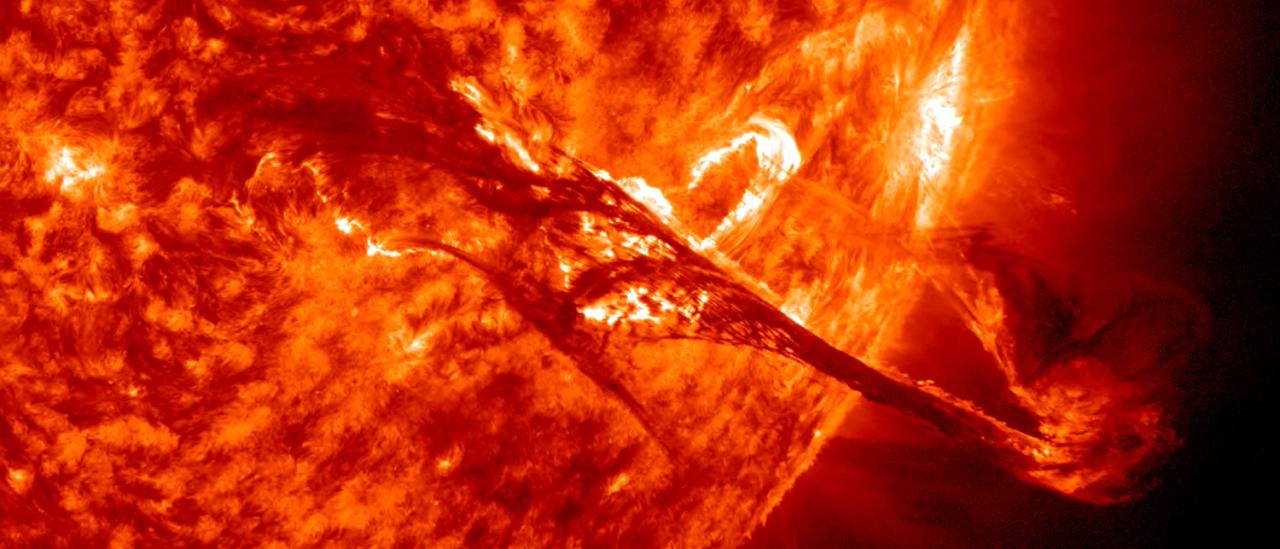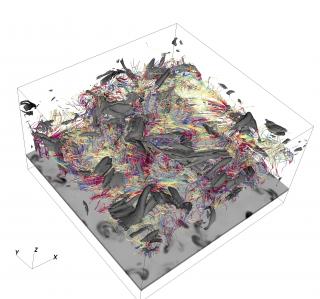Subvenciones relacionadas:
General
Los campos magnéticos son uno de los ingredientes fundamentales en la formación de estrellas y su evolución. En el nacimiento de una estrella, los campos magnéticos llegan a frenar su rotación durante el colapso de la nube molecular, y en el fin de la vida de una estrella, el magnetismo puede ser clave en la forma en la que se pierden las capas externas de forma dramática. En la vida adulta, el magnetismo da lugar a la actividad de las estrellas. Nuestro Sol tiene campos magnéticos que dan lugar a una actividad tan espectacular que es capaz de tener un impacto en la Tierra. Pero en otras estrellas, la actividad magnética es, en algunos casos, órdenes de magnitud más intensa que la solar, influenciando drásticamente el transporte de especies químicas y de momento angular, así como afectando posibles sistemas planetarios alrededor de éstas.
La finalidad de este Proyecto es estudiar diversas manifestaciones del campo magnético que se pueden observar en la atmosfera solar y en otras estrellas. Estas incluyen estructuras tan diversas como las manchas solares, los campos débiles presentes en el sol en calma o estructuras cromosféricas y coronales como los filamentos y las protuberancias. Así, se han ido abordando gradualmente los siguientes temas de investigación:
Magnetismo solar
- Estructura y evolución del campo magnético en manchas solares.
- Estructura y evolución del campo magnético en el Sol en calma.
- Estructura y evolución del campo magnético en la cromosfera y en estructuras cromosféricas (protuberancias, espículas,...)
- Estructura y evolución del campo magnético en bucles coronales.
- Estructura y evolución del campo magnético global del Sol. Estudios del ciclo de actividad magnética.
- Estudio empírico de la propagación de ondas magnetohidrodinámicas en el seno de estructuras magnéticas.
- Estudio empírico de mecanismos relacionados con el calentamiento de las capas externas del Sol.
- Estudio empírico de la influencia de la ionización parcial en la dinamica de la atmosfera solar.
- Implicación en el proyecto del Telescopio Solar Europeo.
Magnetismo estelar
- Desarrollo de métodos numéricos para el diagnóstico del campo magnético estelar, tanto en la superficie como en la cromosfera.
- Estudio del magnetismo en protuberancias estelares.
- Impacto del campo magnético en las últimas fases de la evolución estelar.
Miembros
Resultados
- Ondas espirales en manchas solares: Se han interpretado como ondas magnetoacústicas que se propagan desde el interior hasta capas atmosféricas siguiendo la dirección del campo magnético. Se ha caracterizado la topología del campo magnético de la mancha, descartando que la forma espiral sea consecuencia del retorcimiento de las líneas de campo (Felipe et al. 2019).
- Respuesta magnética a umbral flashes: Observaciones espectropolarimétricas simultáneas de las líneas cromosféricas He I 10830 y Ca II 8542 fueron usadas para estimar las fluctuaciones del campo magnético asociado a ondas de choque. Los choques provocan la expansión de las líneas de campo (Houston et al. 2018, incluye a A. Asensio Ramos).



